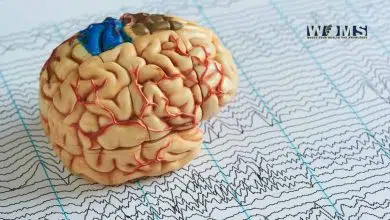What Is Teen Mental Health?

People often assume teens are more carefree than adults. After all, who doesn’t wish they could go back to the days when nothing mattered? As adults, we tend to forget how much each of us struggled during that period. Issues of sexual identity, uncertainty about life and the role we play, and struggles with fitting intend to fade away as we get older and more rigid in our thought patterns.
However, mental health in teens is as important, if not more important, than mental health in adults. Mental health in teens is important because we are still developing coping mechanisms when we are in adolescence. This development makes it more challenging to deal with existential crises and the complexity of life.
This article discusses teen mental health and the disorders we need to look out for, as parents, in our teens. Continue reading to learn more about how to approach mental health in teens and the things you can do to prevent these disorders from plaguing them into their adult life. If you are concerned for your teen’s mental health, you should consider an adolescent behavioral health residential treatment center.
Mental Health Determinants
Adolescence is a sensitive time for all teens. Discussing healthy sleep habits, maintaining a regular exercise regimen, or developing coping, problem-solving, and interpersonal skills are essential components of maintaining a healthy mindset.
However, multiple factors determine overall adolescent mental health. The more risk factors adolescents get exposed to, the greater the potential impact on their mental health. Factors contributing to stress during adolescence include a desire for more autonomy, pressure to conform to peers’ standards, exploring their sexual identity, and grappling with the increased access to technology. Media influence and social media can also introduce identity struggles for teens.
Other influential factors include the home environment, violence, and other socioeconomic problems such as poverty, estranged parents, and sexual abuse. Adolescents with mental health conditions are particularly vulnerable to their status because their brains are still developing and haven’t developed coping mechanisms yet.
Because adolescents aren’t as equipped to deal with mental health struggles, it is critical to enroll them in programs that can provide a stable environment for them.
Emotional Disorders
Emotions run high during the teen years because the emotional part of the brain doesn’t have the regulators developed later, in adulthood years. Common disorders include depression, anxiety, irritability, frustration, and anger. Symptoms from multiple disorders can overlap and cause unexpected mood changes and emotional outbursts. These disorders can also manifest physical symptoms.
Globally, depression is the fourth leading cause of illness in adolescents from the ages 15-19 and the fifteenth leading cause in adolescents aged 10-14. These disorders can have profound effects on schoolwork, social relationships, and truancy. If the teen tries to isolate themselves in response to the condition, it can exacerbate symptoms and even result in suicide.
Childhood Behavioral Disorders
Childhood behavioral disorders are another leading cause of disease in young adolescents and the eleventh leading cause among older adolescents aged 15-19 years. Examples of childhood behavioral disorders include attention deficit disorder, hyperactivity disorder, and conduct disorder.
These behavioral disorders can severely hinder the adolescent’s school performance, and it carries the potential to manifest in defiant behavior. In the worst instances, these disorders can result in criminal activity.
Eating Disorders
Eating disorders typically emerge in adolescence or early adulthood and affect females disproportionately to males. Examples of eating disorders include anorexia nervosa, bulimia nervosa, and binge eating disorders. These disorders, if chronic can lead to severe physical health effects that can even hospitalize or kill teenagers.
Suicide and Self-Harm
Around 62,000 adolescents die every year from self-inflicted incidents. Suicide is the third leading cause of death in older adolescents.
More than 90% of the world’s adolescents live in low-to-middle income areas, and 90% of the world’s suicide among adolescents occurs in teens who live in these countries.
Risk-Taking Behaviors
Risk-taking behaviors such as drug abuse or sexual promiscuity typically start during adolescence. Risk-taking behaviors are unhealthy coping mechanisms and can severely impact an individual’s mental and physical health.
Promotion and Prevention
Promotion and prevention should be the primary aim to respond to teen mental health disorders. This approach strives to bolster the individual’s capacity to regulate emotions and enhance alternatives to potential risk-taking behaviors.
To achieve prevention, adolescents must implement a multilevel approach. It should include training on responding to digital media and teach teens the proper outreach channels such as school guidance counselors.
Mental health awareness for teens is particularly important for adolescents in the most vulnerable situations.
Early Detection and Treatment
Early detection among teens is a critical component of recovery from mental health disorders. The longer a disorder stays prevalent, the more challenging their recovery will likely be. Additionally, avoiding institutionalization and over-medicalization are successes when responding to an adolescent’s condition.
Useful Questions for Screening for Mental Health Disorders
The following is a list of a few effective questions to ask when screening your teen for mental disorders.
- Do you worry a lot or feel overly stressed out? How do you cope with stress?
- Do you feel bored, sad, or irritable most of the time? How do you cope with this?
- Do you have any difficulty with sleeping or appetite?
- Do you find yourself continuing to think about past unpleasant experiences?
- Do you ever feel so upset that you wished you were not alive or wanted to die?
What Causes Mental Health Illness In Adolescents?
Brain Injury
An injury to the brain is a common cause of mental illness that can occur at any time. It is the control center for the nervous system and the body. Naturally, damage to this area can have adverse effects.
Prenatal Damage
Prenatal damage describes any harm that occurs during pregnancy. In some cases, this can be a strong factor contributing to whether adolescents develop a mental illness. Examples of prenatal damage are the mother using drugs or alcohol during pregnancy and certain infections that arise during pregnancy.
Substance Abuse
Substance abuse, acute or chronic, can substantially impact the adolescent brain, contributing to more symptoms of pre-existing mental illness. There are also strong correlations between alcohol use and depression.
Environmental Factors
Outside of psychological and biological causes, environmental causes are difficulties or stressors that adolescents deal with regularly.
What Is Teen Mental Health?
Teen mental health is an important topic today, as 50% of all lifetime cases of mental illness develop by age 14, and 75% of all mental diseases develop by age 24. As a parent, you need to build awareness with your teen without stigmatizing their condition. Your teen should feel comfortable coming to you about their symptoms and asking about potential treatment.




